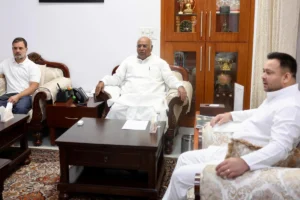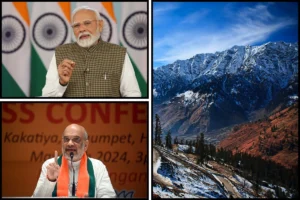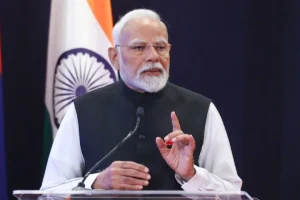
The idea that gender equality is a macroeconomic necessity—not just a moral issue—has gained strong global backing.
Institutions like the IMF, World Bank, and ILO now see women’s economic participation as key to boosting productivity and reducing poverty.
Including women in markets and finance adds resilience to economic growth.
Women represent half of the nation’s human capital. Excluding them from economic activities wastes enormous potential.
Gender inclusion is no longer just about justice. It is now a strategic tool that brings long-term benefits across generations and sectors.
From Welfare To Empowerment
India has shifted its focus from welfare to empowerment.
The Modi government prioritises agency-building over direct service delivery. It empowers first and delivers later.
Schemes like Ujjwala, Jan Dhan, and Swachh Bharat aim to remove basic barriers—clean energy, financial access, and sanitation.
This approach, known as ‘pre-distribution’, builds assets rather than simply redistributing benefits.
The Lakhpati Didi initiative takes this forward. It trains women, promotes entrepreneurship, and supports collective ventures for stable rural incomes.
Credit That Builds Confidence And Community
PM Mudra Yojana (PMMY) reflects this new thinking. It provides collateral-free loans to micro-enterprises where women lead.
PMMY reduces credit barriers and turns women into entrepreneurs. It sees women not as aid recipients but as economic agents.
Earlier, women faced higher credit barriers due to social and institutional challenges.
Studies by Duflo and Banerjee show that women-run businesses have potential but often remain small due to a lack of capital.
PMMY addresses this by lowering transaction costs and enabling local credit through NBFCs and MFIs.
Women now start tailoring units, food stalls, beauty parlours, and retail shops.
This shift boosts household incomes, increases women’s control over money, and builds confidence.
Even small businesses create jobs and support other women in the community.
Long-term, PMMY encourages asset creation and financial literacy. It connects women to digital tools and financial systems.
When women control income, they invest more in children’s health and education, improving future human capital.
Nearly 68% of PMMY’s beneficiaries are women.
The per-woman loan amount has grown at 13% CAGR since FY16, reaching ₹62,679 by FY25.
Women’s savings also rose by 14% CAGR, showing improved financial behaviour.
States that give more loans to women see higher employment in women-led MSMEs.
Credit access boosts both labour force participation and inclusion.
Now, PMMY must enable growth beyond first loans. It should help women move to higher-value Tarun loans.
A bundled approach—credit, skilling, digital access, and market linkage—can deepen impact.
Real-time tracking of gender outcomes, state incentives, and a Mudra Growth Fund can fuel scalable enterprises.
The government deserves credit for believing that when a woman becomes an entrepreneur, she does more than earn. She saves, hiresShe educates.
She uplifts. That’s the true power of agency—and it’s reshaping India one Mudra loan at a time.
Also Read: BP Eyes Expanded Gas Output From NEC-25 Block; Praises India’s Energy Reforms
To read more such news, download Bharat Express news apps


 -->
-->



















